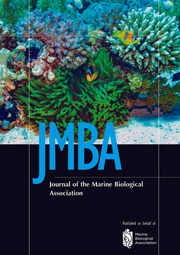Article contents
Observations on the bionomics and physiology of Trebius caudatus and Lernaeocera branchialis (Copepoda)
Published online by Cambridge University Press: 11 May 2009
Extract
A study of the distribution of Trebius caudatus from four species of Raja trawled from two localities of different depths at Plymouth shows that there is a higher infection rate in the deeper water.
Both at Roscoff (France) and at Plymouth the mean total rate of infection is about 20%, and the larger fish are more often infected than the smaller. Both sexes are equally parasitized and the copepods tend to collect near orifices on both surfaces of the fish (regions where the mucus secretion is maximum). Immature forms were found at Roscoff in the mucus of the orifices themselves. The collections from both places contained about equal numbers of male and female parasites.
Intestinal respiration, a feature common to free living and parasiticcopepods, includes the gaseous exchange through the gut wall, the associated movements stirring the oxygen vector (which is either the external medium taken in by the anus, or the food current when this is the blood of the host), and the circulation of the body fluid as a direct result of these movements. The significance of the gut movements, which include the peculiar two-way peristalsis, is examined in detail in Trebius caudatus and Lernaeocera branchialis: the former has a functional anus which admits the external medium and the latter has a closed anus and employs the blood of the host as the oxygen vector.
- Type
- Research Article
- Information
- Journal of the Marine Biological Association of the United Kingdom , Volume 25 , Issue 2 , November 1941 , pp. 393 - 417
- Copyright
- Copyright © Marine Biological Association of the United Kingdom 1941
References
REFERENCES
- 12
- Cited by


